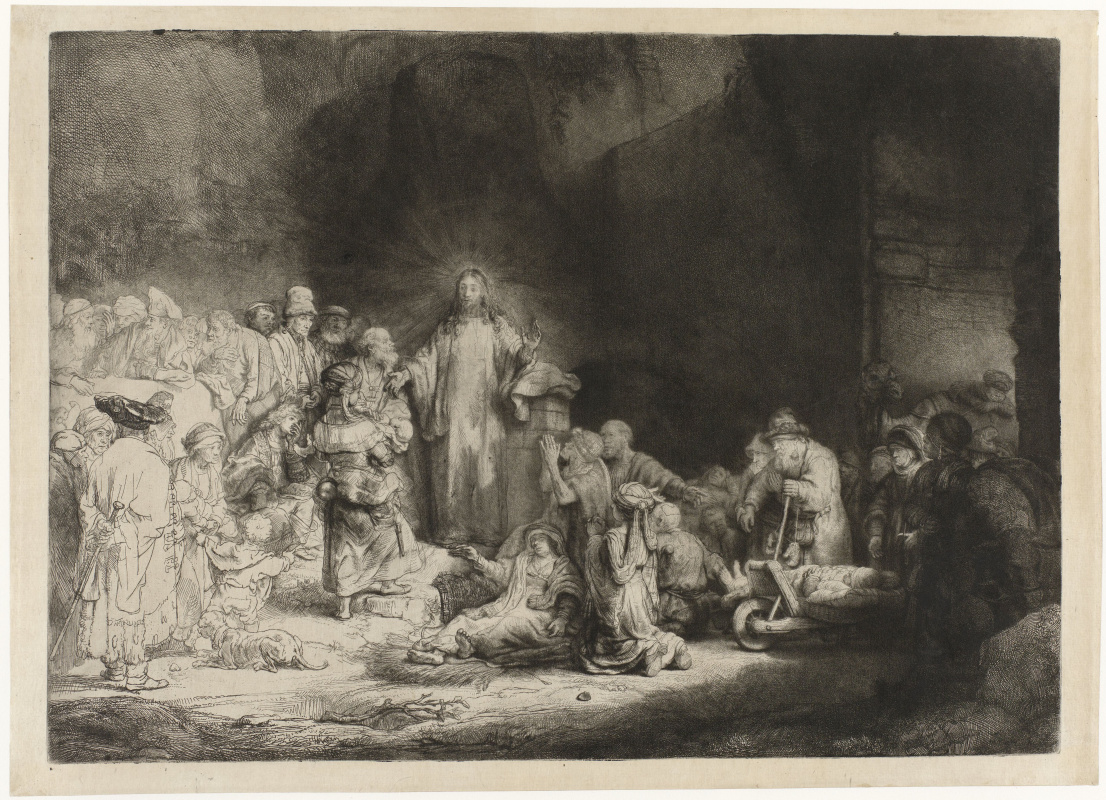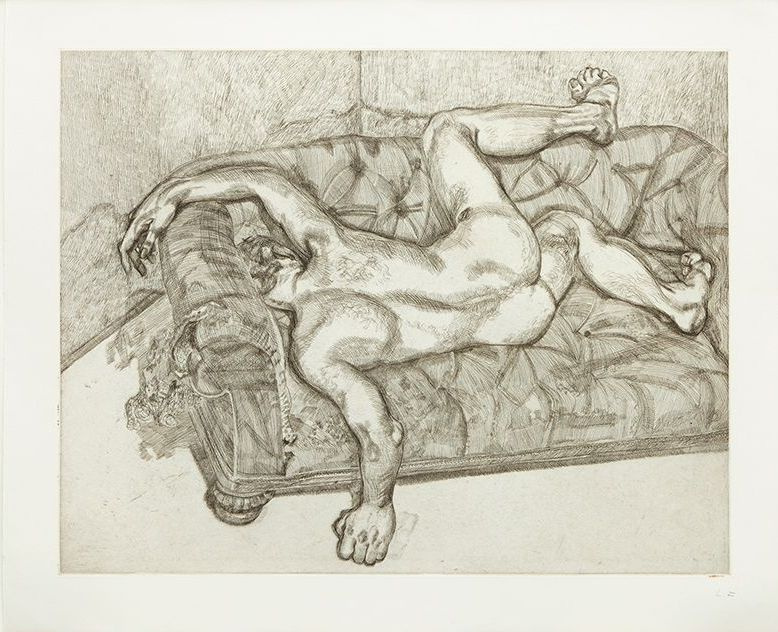The first known etched boards date from the early 16th century. Etching (fr. eau-forte — strong water, aquafortis, nitric acid) is the main technique of gravure printing easel graphics, which suggests the image to be etched with acid on the surface of a metal plate. From a technological aspect, etching is the opposite of a carving.

Description of the etching technique. Before starting etching, a metal (steel, copper or zinc) plate is prepared: it is straightened, slightly rounded so that it does not damage the paper, and polished. Then it is evenly covered with a layer of primer — acid-resistant varnish or wax — using a soft swab or roller.
Ivan Shishkin, Cliff (1878). The State Tretyakov Gallery, Moscow
Using styluses (steel needles of different diameters), the engraver scratches the drawing on the primer, exposing the metal underneath. The reverse side of the board is varnished and then immersed in acid (in some cases, it is showered with acid). It gnaws metal in exposed areas, creating depressions for ink to enter later. The depth and width of these grooves depend on the concentration of the solution and the duration of the acid exposure — the more concentrated is the liquid and the longer the plate is in it, the wider and deeper the depressions will be, and, accordingly, the darker will be the lines on the print.
This process is repeated to create subtle nuances: after the first etching, the engraver can re-coat some areas with primer to keep them lighter, and submerge the board in acid again to make the remaining deeper. When the desired result is achieved, the primer is removed with a solvent.
Afterwards, ink is distributed over the surface of the board using a cloth swab or a cardboard blade, and the excess is removed with the same material. The plate is additionally cleaned with a tarlatan rag (hard starched gauze or muslin). The board is placed on the press with the pattern facing up, covered with damp paper and a piece of cloth or felt. Pressing on them, the machine shaft squeezes the ink from the plate onto the paper.
Afterwards, ink is distributed over the surface of the board using a cloth swab or a cardboard blade, and the excess is removed with the same material. The plate is additionally cleaned with a tarlatan rag (hard starched gauze or muslin). The board is placed on the press with the pattern facing up, covered with damp paper and a piece of cloth or felt. Pressing on them, the machine shaft squeezes the ink from the plate onto the paper.
Two bathers
1895, 26×24 cm
The nuances of etching. The etching needle easily scratches the primer, this is what distinguishes etching from engraving
, where considerable physical efforts are required from the artist to overcome the resistance of the metal. The etcher can draw both short strokes and long curved lines with the stylus, correct or change the drawing, create nuances by re-etching. Therefore, with the help of etchings, landscapes, genre scenes and informal portraits are usually depicted, while chisel engraving
is often used to convey plastic and physical energy, to add solidity to official portraits.
Interesting facts about etching. The great innovator Rembrandt often resorted to etching in his work. He masterly used this technique, which is testified by the history of the Six’s Bridge engraving , dated 1645. According to the legend, the artist and Jan Six, his friend and patron, decided to have a picnic in nature. Having already gone quite far from the village, they found that they had forgotten the pot of mustard, and sent a servant to fetch it. Rembrandt bet he could finish the etching before the messenger returned, and won.
Interesting facts about etching. The great innovator Rembrandt often resorted to etching in his work. He masterly used this technique, which is testified by the history of the Six’s Bridge engraving , dated 1645. According to the legend, the artist and Jan Six, his friend and patron, decided to have a picnic in nature. Having already gone quite far from the village, they found that they had forgotten the pot of mustard, and sent a servant to fetch it. Rembrandt bet he could finish the etching before the messenger returned, and won.
Vivid examples of etching. Alongwith Rembrandt, Albrecht Dürer, Francisco Goya, Anders Zorn, Théophile-Alexandre Steinlen, Yevgraf Chemesov, Ivan Shishkin are considered masters of etching. One of such best engravings is Rembrandt’s Christ Healing the Sick, which depicts more than forty characters. The origin of its other name — The Hundred Guilder print — has two versions. According to one of them, the print was sold for this amount, which was exorbitant for the 17th century. According to another, Rembrandt traded the work for a rare antique work by Marcantonio Raimondi, Raphael's engraver, which was initially being sold for 100 guilders.




















